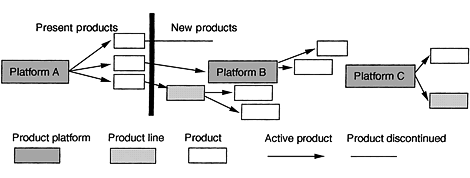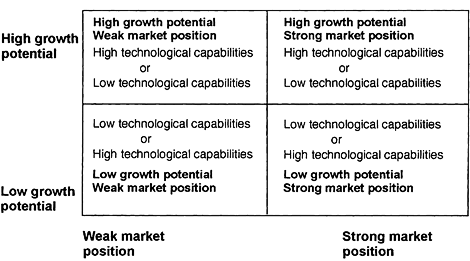FOOD
PRODUCT DEVELOPMENT
Mary Earle, Richard Earle and Allan Anderson |
| Loading
|
|
||||
|
|
Part 2, Chapter 2
Developing an innovation strategy 2.5.4 Planning a new product portfolio
After this product-idea generation related to the innovation strategy and a preliminary screening of the new product ideas, a map of the company's product mix for the next few years can be developed. The incremental product changes and the new products are fitted into the product mix over time. The aims of the product mix and the constraints on the product mix are defined, then the actual planning of the product introductions over time developed. This is the blueprint or the map for the future of the product mix and for the product development portfolio (Clark
and Wheelwright, 1993) as shown in Fig.
2.12.
 Fig. 2.12 Planning on a product map. At this time the product idea is only a simple description, with identification of the use and some attributes, and may be a relation to competing products. The relationship of the product to the other products in the mix needs to be identified. There is also identification of the target market and the technology area. A range of costs and/or prices may also be identified. The timing of the introduction of the improved products and the new products is also identified. In studying the proposed product mix, it is useful to divide products into groups according to growth potential, technological capabilities and market position as shown in Fig. 2.13.  Fig. 2.13 New product groupings. It is important to analyse the products in this way, comparing the predicted markets with the technological capabilities. If the new product areas seem unsatisfactory or if they present major problems to the company capabilities then they need to be recycled back to the management group that developed the innovation strategy. The remaining product areas provide the basis from which the product development strategy is developed. |
|
 |